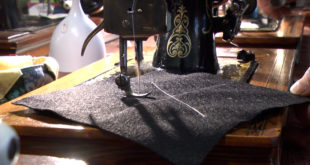White-nose syndrome is an extinction level threat to several Upper Peninsula bat species. The effects are reverberating well beyond ecological considerations. The northern long-eared bat will most likely not survive, says Dr. Allen Kurta. tri-colored bats and little brown bats have seen their populations crater by as much as 90 percent. All of this has happened in just the past seven years in the Great Lakes region.
The struggles of the animals were cited by the United States Fish and Wildlife Service, Michigan’s Department of Environment, Great Lakes, and Energy, and Department of Natural Resources in the agencies’ unanimous rejection of a proposed wind turbine project in Adams and Stanton Townships recently.
Kurta explains why white-nose syndrome is so devastating.
With snow on the ground in the Keweenaw for up to six months, bats tend to enter hibernation in October and don’t come out of it until May or June. Infected bats are waking up in the dead of winter and unable to find food, before starving to death or dying from another symptom.
The fungus is unique in that it prefers cold temperatures. It struggles to survive on its own and instead latches onto bats, whose exterior skin temperature is in its ideal range.
The fungus’ scientific name is Pseudogymnoascus destructans, an acknowledgement of the grim results its exposure has on a bat colony. Kurta has been doing bat surveys in the Western UP, the first of their kind in Michigan, since 1996. He says there is reason for optimism.
The disease was first identified in America in 2006 in New York State.
Even if the best case scenario takes hold, Kurta says bats are slow reproducers. They can live over 30 years, and usually have one baby per year, in stark contrast to other airborne creatures. Even if the local species that are resistant to white-nose syndrome in the Superior Basin, believed to be four of the seven, can pick up the slack and help the overall population rebound, it will take generations to succeed.
 Keweenaw Report Your Source for Local News and Sports
Keweenaw Report Your Source for Local News and Sports





